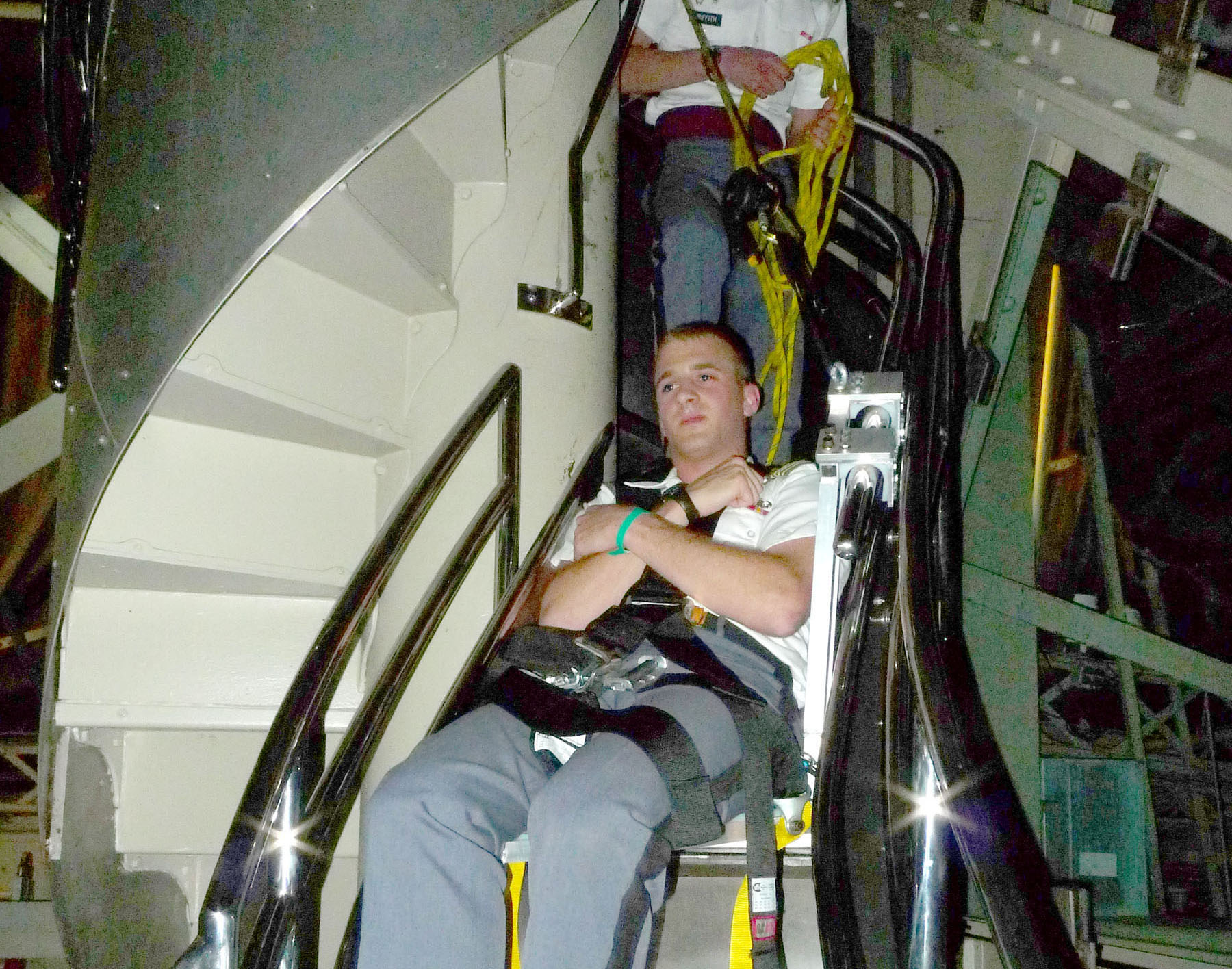|
You are viewing ARCHIVED content published online before January 20, 2025.
Please note that this content is NOT UPDATED, and links may not work. For current information,
visit https://www.nps.gov/aboutus/news/index.htm.

Kevin Daley
Contact: Darren Boch, 212-668-2251 Liberty Island, New York, NY – The National Park Service (NPS) and cadets from the United States Military Academy today demonstrated a new rescue device designed to evacuate injured or sick visitors down the steep double-helix steps that wind up and down inside the Statue of Liberty. A senior project by West Point’s Department of Civil and Mechanical Engineering, the project afforded cadets the opportunity to apply their creative engineering skills to the development of an evacuation system that will be available for use this week by NPS personnel.
“It has been an absolute pleasure working with the National Park Service, and we are very happy to finish this project by delivering a fully functional rescue device that can be used starting today,” said Major Mark DeRocchi, Executive Officer, Department of Civil and Mechanical Engineering at West Point. “The fact that we are able to assist this national icon to remain open to the public for future generations and perhaps help a visitor in their time of need only makes this project that much more valuable.”
The stairs leading up to the crown of the Statue of Liberty were reopened to the public last July 4 after being closed following the 9/11 attacks. While access to the crown is generally safe, it was determined that a new system should be in place that would allow emergency responders to quickly and safely remove injured or sick visitors or park staff from the statue’s crown and down the 146-step double helix staircase.
"This project has been a wonderful partnership," said David Luchsinger, superintendent of Statue of Liberty National Monument and Ellis Island. “We always want the best experience for our visitors, but unforeseen things happen. The West Point cadets have created a device that enables our rangers to respond faster and more efficiently should a visitor need that level of help."
In April 2009, members of the Statue of Liberty National Monument’s Emergency Management Services (EMS) team, eight senior cadets and cadre from West Point collaborated on the “Statue of Liberty Capstone Project.” While it was a remarkably simple idea, the design of the device did require some rather complex engineering due to the unusual nature of the double helix staircase.
The crown rescue device allows the incapacitated visitor to be placed in a seated position and rolled down the 45 degree-angled stairs on wheels that ride over the railings. The speed of the descent is controlled by two rescuers and can easily move visitors weighing up to 350 lbs down the staircase at a meter per second.
When he was a Boy Scout, NPS Ranger Anthony Byrnes-Alvarado, who spearheaded the park’s involvement with the project, met Major Mark DeRocchi, then a cadet at the academy. They stayed in touch and fifteen years later their friendship led to the collaboration.
“Shortly before the crown re-opening, I asked his opinion on evacuation as an engineer,” said Ranger Byrnes-Alvarado. “He was more than willing to give it, but went the extra mile and handpicked two of his best civil engineering students and six others to work on the project, and we couldn’t be more pleased with the result.”
B-roll footage of the device being demonstrated is available through WNBC News4 New York.
For still photographs, please contact Kevin Daley at 212.363.3206, ext. 152 |
Last updated: February 26, 2015
